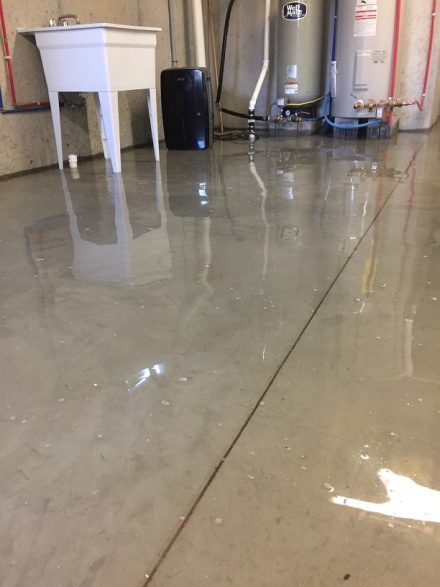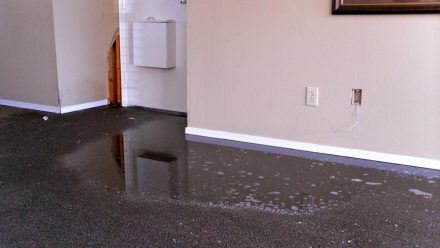
The spring is known as a rainy season, and when the rain is heavy, that large amount of water can start to affect your home. Powerful storms can overwhelm your gutters or worse, flood the soil around your foundation. To prevent any lasting damage, find and fix immediate problems as soon as you can safely do so.
Water getting into your home can be a big and possibly expensive issue if not resolved immediately. Here’s how to conduct a thorough post-storm inspection to identify and clean up any water before it becomes problematic:

Check the Basement First
Floods can cause rain damage to basements
Continuous heavy rain can saturate your yard, allowing excess water to seep through any cracks in your foundation and flood your basement.
- To avoid severe damage, get your basement dry as quickly as possible.
- To remove larger quantities of water, use buckets, a portable pump or a wet/dry vac.
After that, open doors and windows to increase ventilation, and run fans to circulate fresh air. - If you have a dehumidifier, set it on its highest setting and leave it running.
Examine Carpets, Rugs and Wood Floors:
If the rain managed to get through open or unsealed windows, or under a doorway onto your carpets, rugs, and hardwood floors, dry those areas immediately. This is a breeding ground for mold, which will start growing on or under a damp carpet within 24 to 48 hours.
First, remove any rain-soaked rugs and wash and dry them. If a part of your carpet is soaked through, pull up the affected area to remove contact between the wet fibers and the floor. Replace any wet padding underneath and use fans to dry the carpet as much as possible.
For hardwood floors, if wood panels absorb too much water, they will warp. You’ll want to dry them out fast to minimize the damage.
- First, soak up excess water with mops and towels.
- As with the basement, open doors, and windows for ventilation.
- Use as many fans as possible on the affected areas.
- Again, if you have a dehumidifier, set it on high and leave it running.

Inspect the Attic:
During a heavy storm, winds can rip off shingles, while sideways-blowing rain can get into your ventilation.
For an unfinished attic, the biggest concern is your insulation since it soaks up and holds moisture. Wet insulation is a breeding ground for mold and bacteria and has the potential to rot any wood it is in contact with.
If you find any wet insulation, pull it out, then run a fan and dehumidifier in the area before adding new insulation.
For finished attics, follow the same procedures for the basement and interior floors.
Inspect the Walls:
Standing water is the biggest threat to walls. If left too long, a flooded basement will soak the bottom of the drywall and plaster, which are difficult materials to dry. If that happens, the damaged sections will need to be replaced.
Walls can especially be damaged in areas below leaky windows. If you notice stains or discoloring, bubbling paint, or peeling wallpaper, call a professional to identify the source of the leak, then replace any damaged drywall or plaster. Also, check the wall cavity insulation. If it is wet, it also needs to be replaced after you dry out the cavity as much as possible.
Double Check Gutters and Downspouts
One of the most common causes of water damage is rainwater pooling around the foundation. As time goes on, that water can seep into the concrete of the foundation and create cracks that allow even more water through. Gutters and downspouts are the best way to avoid this.
Most people inspect their gutters and downspouts in the spring and fall but after a big storm with high winds, it’s worth checking again. Look for and remove excess leaves, twigs, and other debris from the gutters. To be sure that the openings to all downspouts are clear, use a garden hose to check that water flows easily. If needed, extend downspouts so they empty at least 10 feet away from your foundation.

Although the weather may be out of your control, you can control how your home is affected. It is much easier (and cheaper) to inspect your property and fix issues after a bad storm than it is to fix all the damage that was done by waiting.
